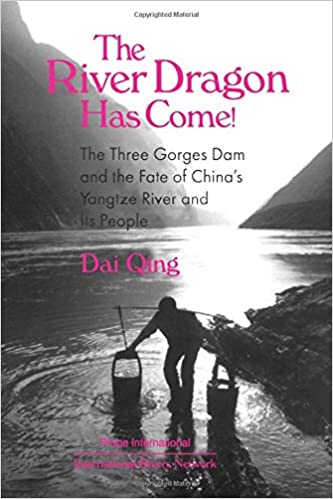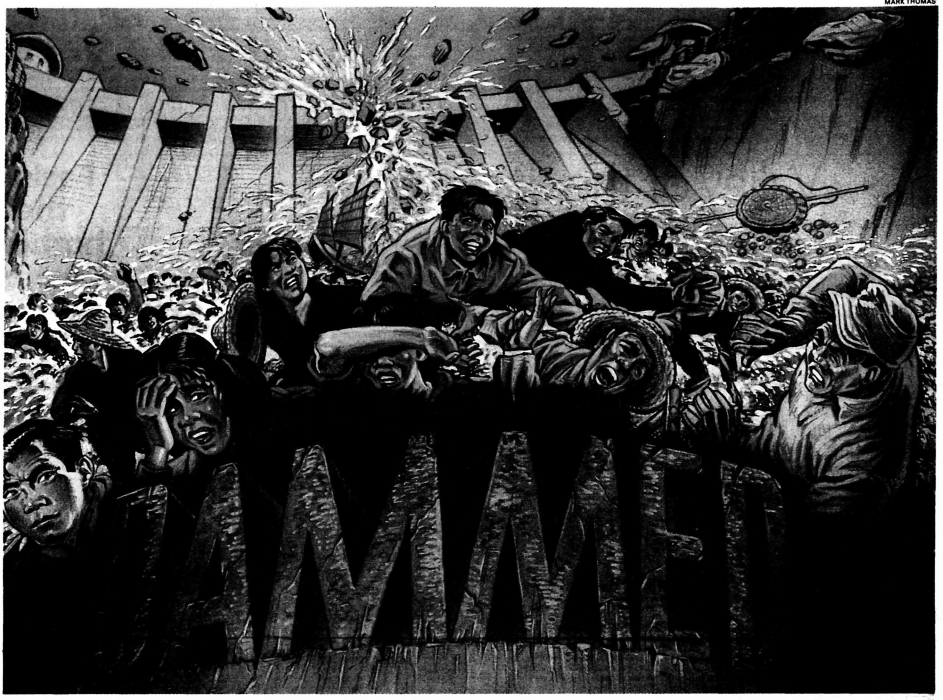Initial Suppression
The effects of the Banqiao dam failure were truly disastrous. The floods and resulting famine and disease led to the deaths of 230,000 people and displaced eleven million more. Yet it went unremarked upon by everyone. No newspapers reported on it, other than a few reports of Typhoon Nina hitting Taiwan. The US navy included a cursory note in their yearly typhoon report that Typhoon “Nina entered the Formosa Straits with minimal typhoon strength, … before striking the China mainland on the 3rd. Nina moved inland and lost tropical cyclone characteristics,” (Annual Typhoon Report).
The effects of the flood were even unknown to most outside the Henan region and upper echelons of Chinese governance (The Forgotten Legacy). The Henan Daily, the newspaper in the region, acclaimed the “heroic struggles” against the flooding described the “successful efforts to prevent the collapses of several other dams,” (Human Rights Watch). But the newspaper made no mention of the Banqiao dam or the destruction that was evident in the region (HRW). There are no public records in China or the world from 1975 referencing the humongous loss of life after the dam failures (HRW). China was an intensely closed state with its media and shut down any attempts to share the plight of those in Henan. A report encapsulating the extent of the disaster circulated the high ranks of the parts of the Chinese hydrology and energy bureaucracy in 1979, but this report was quickly disputed and their circulation ended (HRW).
Human Rights Watch Exposure
In February of 1995, Human Rights Watch Asia released a report on China’s newest dam project, the Three Gorges Dam. While researching their report, a central discovery of the reporting was compiling and publicizing accounts of the Banqiao Dam Failure to a broad and international audience. The Human Rights Watch Asia Report fundamentally shifted the historical understanding of the Banqiao Dam Failure. Before the report was released there was almost no awareness of the Banqiao Dam Failure outside of Henan province and select circles in the Chinese Bureaucracy.
In the late 80s and early 90s, small amounts of information started to spread, mostly by hydrologists and other scientists speaking out against the Three Gorges Dam Project (HRW). A Chinese journalist under the pseudonym of Yi Si provided the most complete account of the dam failure in the early 1990s. Although not published by Yi Si themself, their work was picked up by Human Rights Watch Asia in HRW’s investigation of the Three Gorges Dam project. Si’s research was also featured by Dai Qing, a prominent essayist and anti-dam activist, in Qing’s book The River Dragon has Come. This book was published to both Chinese and international audiences in an attempt to stop the Three Gorges Dam Project.

International Reaction
When Human Rights Watch Asia released a report discussing the dam failure in 1995, in light of research into the Three Gorges Dam project, international audiences finally gained awareness. Newspapers reported the grim and details of the dam failure. Overall the reception was surprised and saddened. One article described “the tragedy and its horrifying aftermath,” as one of the worst calamities of the century,”(Mickleburgh). Another description of the Human Rights Watch report described “the account of the 1975 dam disasters” as the most startling part of the report,” (Mufson).
One critical article in the Telegraph took a very dark and harsh turn when analyzing the dam failure in the context of the newest Chinese project of the Three Gorges Dam. They said the Banqiao Dam Failure “was so much fun they just had to try it again,” (Gilbert). Describing the domino effect of dam failures the article says “ 62 beautiful new dams broke, one after another, like buttons on the Incredible Hulk’s shirt – pop! pop! pop!- all the way down the river,” (Gilbert). The Telegraph ran the headline “Valley of the Dammed” for the article and included a nearly page wide photo with a condescending caricature of Chinese fleeing the floods of the dam. In the wake of twenty years of suppression, this was not the narrative the Chinese wanted about the Banqiao Dam Failure.
